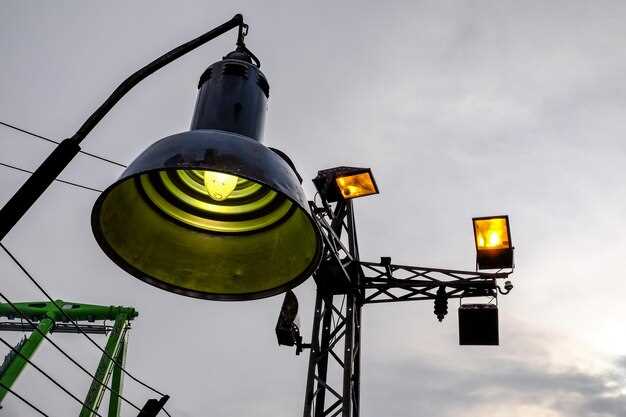
In the realm of vehicle safety, the importance of visibility cannot be overstated. For trailers, proper lighting and reflector usage are not just enhancements–they are legal requirements that ensure the safety of both the driver and others on the road. Understanding these regulations is essential for compliance and can significantly reduce the risk of accidents.
The laws governing trailer lighting can vary by state or country, making it crucial for trailer owners to familiarize themselves with local regulations. Typically, these laws mandate specific types of lights and reflectors be used to optimize visibility, especially during nighttime driving or poor weather conditions. Failing to adhere to these requirements can result in fines and, more importantly, compromised safety.
Additionally, suitable lighting not only enhances the presence of a trailer on the road but also communicates its dimensions and movement intentions to other drivers. Reflectors serve a similar purpose, providing passive visibility that helps in alerting nearby vehicles, particularly in low-light conditions. Thus, a thorough understanding of the legal standards surrounding these components is critical for all trailer operators.
Key Regulations for Trailer Lighting Compliance

Ensuring compliance with lighting regulations is essential for the safety and visibility of trailers on the road. Different jurisdictions may have varying standards, but the fundamental principles remain consistent.
Visibility Standards are a primary focus. Most regulations mandate that trailers must be equipped with specific types of lights, including tail lights, brake lights, turn signals, and reflectors. The aim is to enhance visibility during both day and night driving conditions.
For tail lights, they should emit a red light and be clearly visible from a significant distance. Furthermore, trailers that are over a certain length must also be outfitted with additional lighting, such as side marker lights.
Brake lights must activate in conjunction with the towing vehicle’s braking system, providing clear signals to other drivers. Failure to meet these standards can lead to increased risks of accidents.
Additionally, the turn signal requirements dictate that trailers must have well-placed lights that indicate lane changes, which helps prevent collisions. These signals must be distinctly visible from both the front and rear of the trailer.
Reflectors are another critical component. Trailers need proper reflectors located on their sides and to the rear. These reflectors must meet certain specifications to ensure they effectively reflect vehicle headlights, thereby increasing the visibility of the trailer in low-light conditions.
Finally, regulations may specify the color and intensity of the lighting used on trailers. Following these standards is crucial not only for legal compliance but also for the overall safety of all road users.
Visibility Rules for Safe Trailer Operation

Ensuring visibility is crucial for the safe operation of trailers on roadways. Proper lighting is a key component in meeting safety regulations and keeping all road users aware of the trailer’s presence. Various rules govern the use and placement of lighting on trailers to enhance visibility both during the day and at night.
Federal and state regulations typically require trailers to have specific lighting configurations, including taillights, brake lights, and turn signals. These lights are essential for indicating when the trailer is stopping or changing direction. The placement of these lights must adhere to rules that establish their height, distance from the ground, and their visibility from specific angles to maximize their effectiveness on the road.
In addition to standard lighting, trailers must also be equipped with reflective materials. Reflective tape or sheeting can significantly improve visibility in low-light conditions. Many jurisdictions mandate the use of these reflective elements on the sides and rear of the trailer, particularly for larger units. The rules concerning reflective materials specify color, placement, and size to ensure optimal visibility and compliance.
It’s also important that trailers are equipped with additional lighting, such as clearance lights and side marker lights, to outline the trailer’s dimensions. These lights help other drivers gauge the size and position of the trailer, reducing the risk of accidents. Compliance with these visibility rules is not just a legal obligation; it is essential for safeguarding the lives of all road users.
Regular inspections of trailer lighting systems and reflective materials should be conducted to ensure they are functioning correctly. Non-compliance with visibility rules can lead to accidents, legal penalties, and increased liability. Therefore, understanding and adhering to the visibility rules for trailer operation is imperative for safety on the road.
Choosing the Right Reflectors for Your Trailer
Selecting the appropriate reflectors for your trailer is crucial to ensure compliance with lighting regulations. Specific rules dictate the type, color, and placement of reflectors to enhance visibility and safety on the road. Understanding these requirements helps you make informed decisions.
First, consider the color of reflectors. Red reflectors are typically required on the rear of the trailer, while white reflectors are used on the front and sides. This color-coding aligns with safety standards and provides clearer signals to other drivers, especially at night or in low-light conditions.
Next, the size and shape of reflectors can vary, but they should be large enough to be easily seen from a distance. Ensure they meet legal dimensions as specified in local regulations, as this can differ significantly between states or countries. Properly sized reflectors will aid in compliance with lighting laws while maximizing visibility.
Placement is another vital aspect. Rear reflectors should be mounted at a height that is easily visible, ideally near the tail lights, ensuring they are not obstructed by cargo. Side reflectors should be positioned along the length of the trailer to indicate its width, enhancing the visibility of your trailer in various conditions.
Lastly, regular maintenance is important. Inspect reflectors frequently to ensure they are clean and free from damage, as dirt and wear can diminish their effectiveness. Keeping reflectors in optimal condition not only adheres to lighting rules but also promotes safety on the roads.





